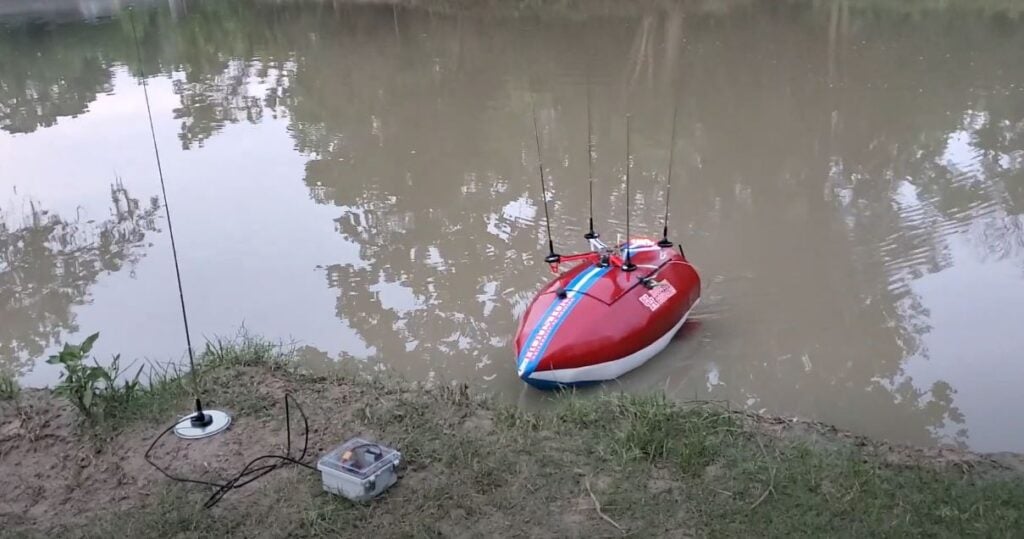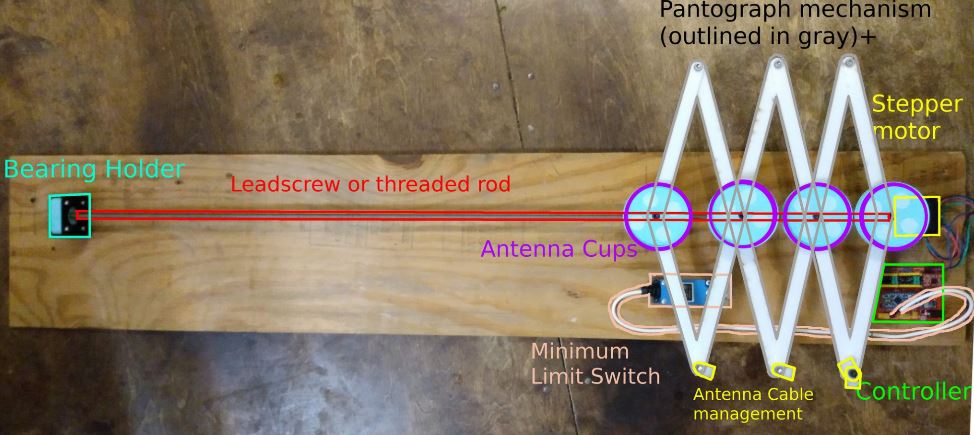KrakenSDR Update: New Prototypes, Software Updates, Campaign to Release Soon
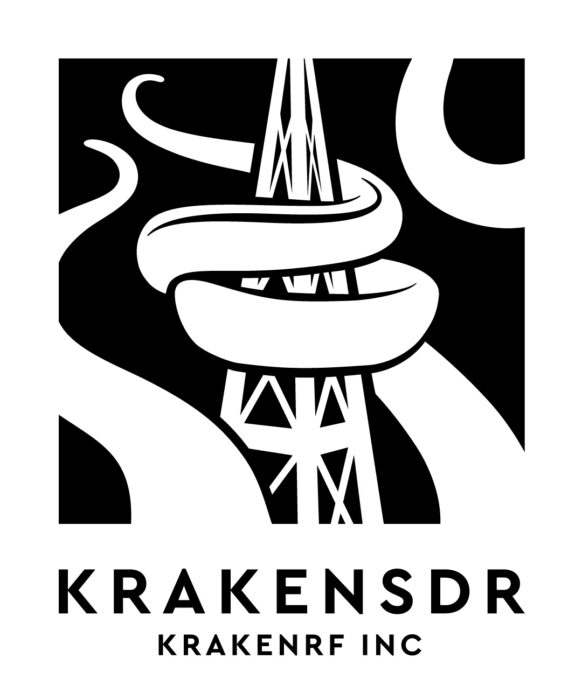 KrakenSDR is our 5-tuner coherent software defined radio based on RTL-SDR. It is the successor to the KerberosSDR and will be crowdfunded on Crowd Supply with the campaign due to begin soon. Please sign up to the KrakenSDR Crowd Supply mailing list to be notified as soon as the campaign begins, and to check out our previous videos demonstrating the unit in action.
KrakenSDR is our 5-tuner coherent software defined radio based on RTL-SDR. It is the successor to the KerberosSDR and will be crowdfunded on Crowd Supply with the campaign due to begin soon. Please sign up to the KrakenSDR Crowd Supply mailing list to be notified as soon as the campaign begins, and to check out our previous videos demonstrating the unit in action.
With a 5-channel phase coherent RTL-SDR interesting applications like radio direction finding (RDF), passive radar and beam forming become possible. It can also be used as five separate RTL-SDRs for multichannel monitoring.
KrakenSDR Updates
Like many other projects we have been severely delayed by COVID work restrictions and the effects it's having on the supply chain, and I'd like to thank everyone who is keen to get a hold of a KrakenSDR for their patience. But the ball is rolling faster now and we have finally received our latest KrakenSDR prototypes! Testing has been ongoing for the last few days, and apart from a few minor issues everything is working brilliantly. At this stage we are confident in the design and are making plans to begin the crowdfunding campaign soon.
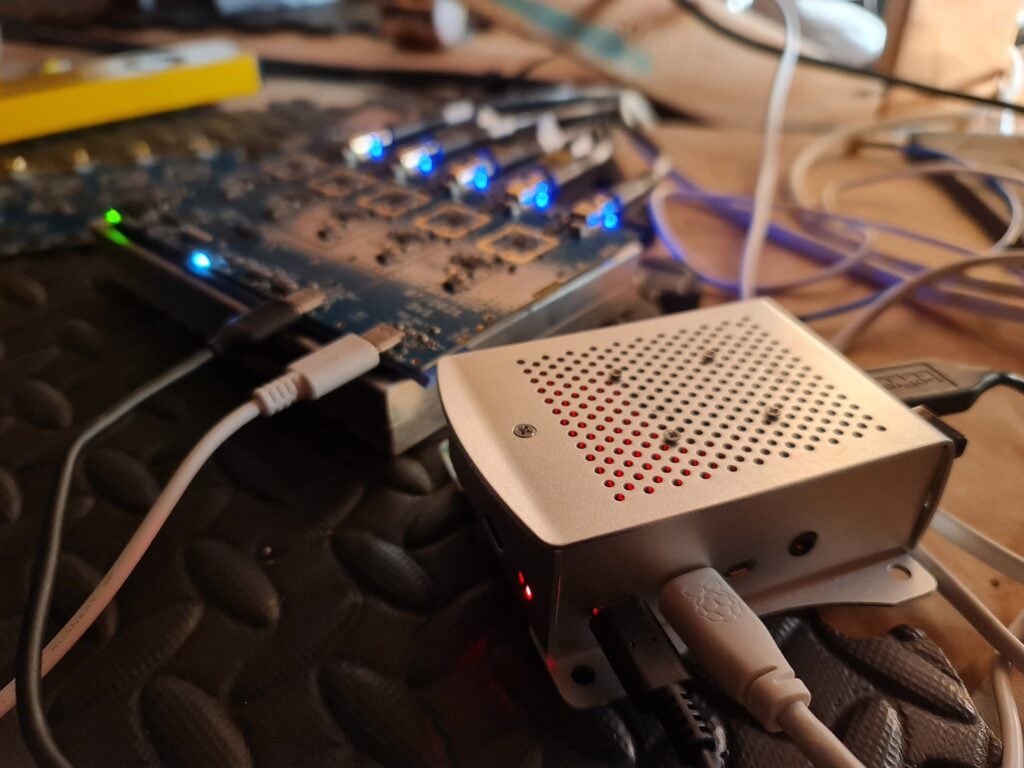
Supply Chain Constraints
The first batch will unfortunately be limited to 1000 units maximum due to supply constraints and we expect this first batch to be ready 2-3 months after the campaign finishes. So if you are after a unit ASAP, please ensure you are on the CrowdSupply mailing list as we fully expect demand for the first batch to outstrip the supply.
But if you are willing to wait, batch 2 will be still be available at the campaign special price. we will have a second batch available for early preorder at a discount (sorry due to higher than expected shipping and skyrocketing component prices we can't discount the second batch at the moment). Please keep in mind that the second batch will be at least 6 months away due to the long supply chain resulting from the pandemic.
Next Steps
The next stages in hardware development will involve finalizing our custom milled aluminum enclosure, testing one last prototype, and beginning mass manufacturing when the crowd funding campaign is over.
Work on the software is ongoing, but the beta version of our new DAQ firmware and direction finding DSP software layer is stable and already available on the krakensdr GitHub at https://github.com/krakenrf. Everything resides in the development branches and there is full documentation on the code structure available in the Documentation folder. This code can also be used on the KerberosSDR by editing the configuration files to specify 4 receivers instead of 5.
By the time the units ship out we will have a ready to use SD card image for the Raspberry Pi 4 and a quickstart guide available.
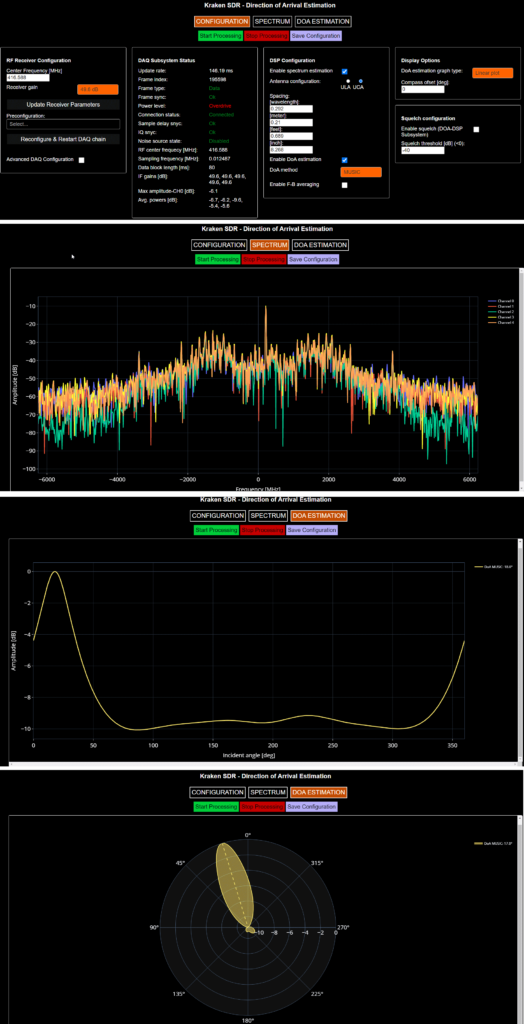
Android App
We have also been working at improving the Android direction finding companion app. This app was made during the KerberosSDR release a couple of years ago, and is used to plot and log the direction finding bearings being generated by the Kerberos/KrakenSDR unit, combining it against the GPS and movement data generated by the Android phone. This Android phone + KrakenSDR combination results in a powerful multipath resistant radio direction finding tool, and once enough data has been collected (usually after a few minutes of driving) it is able to determine where the most likely transmitter location is.
The upgraded app makes use of the full 360 degrees of direction of arrival and multipath data that is generated by the KrakenSDR, resulting in a more accurate determination of the transmitter location, and a better understanding of the uncertainties. It also allows users to visualize multipath. There are also various bug fixes and improvements made overall. We are planning to transition this app into a paid app, but all KrakenSDR backers will receive a license for free and the older KerberosSDR app will remain free.
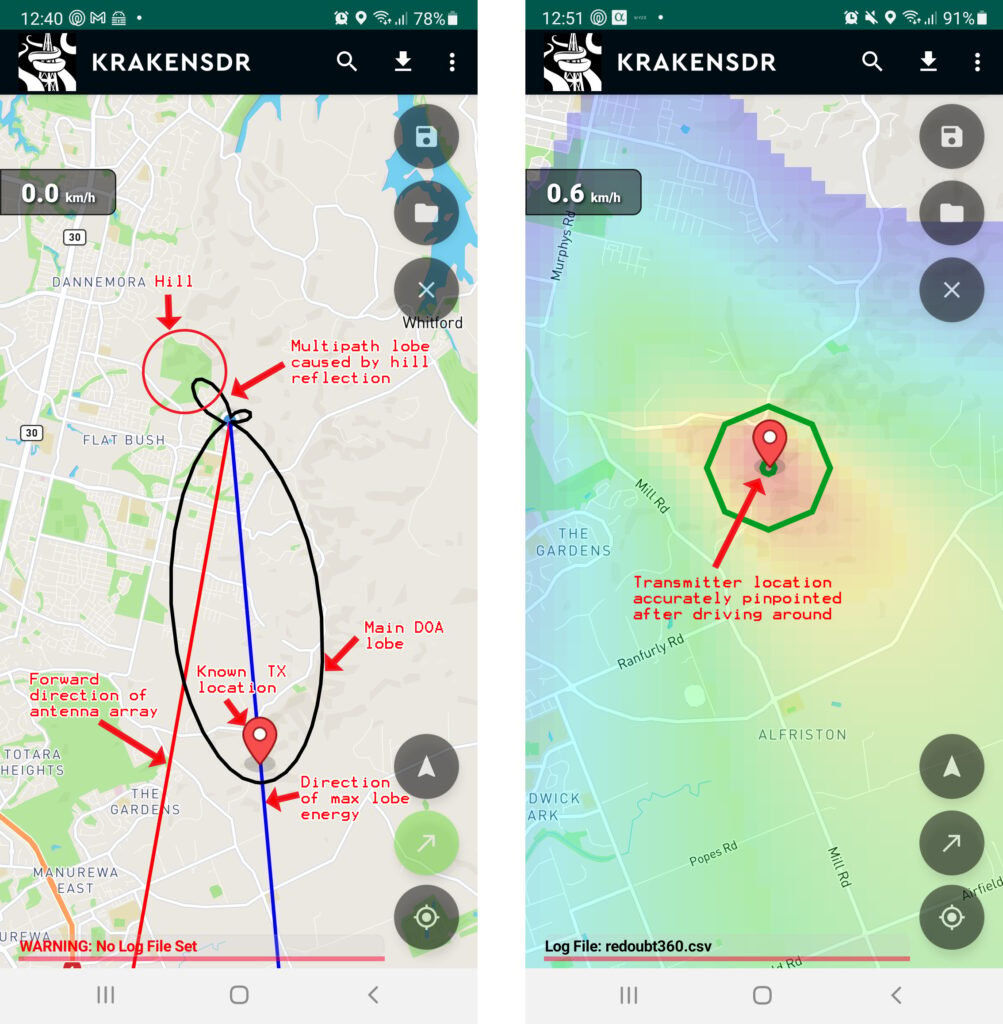
KrakenSDR Antennas
To work as a radio direction finder, KrakenSDR needs five antennas. If you plan to use them in a circular array, they need to be omnidirectional antennas such as whips or dipoles. So to go along with the KrakenSDR we will be selling an optional set of five magnetic whip antennas which can be mounted on for example, the roof of a car. (Please note the magwhips shown in the photo may differ slightly from the final ones sold).
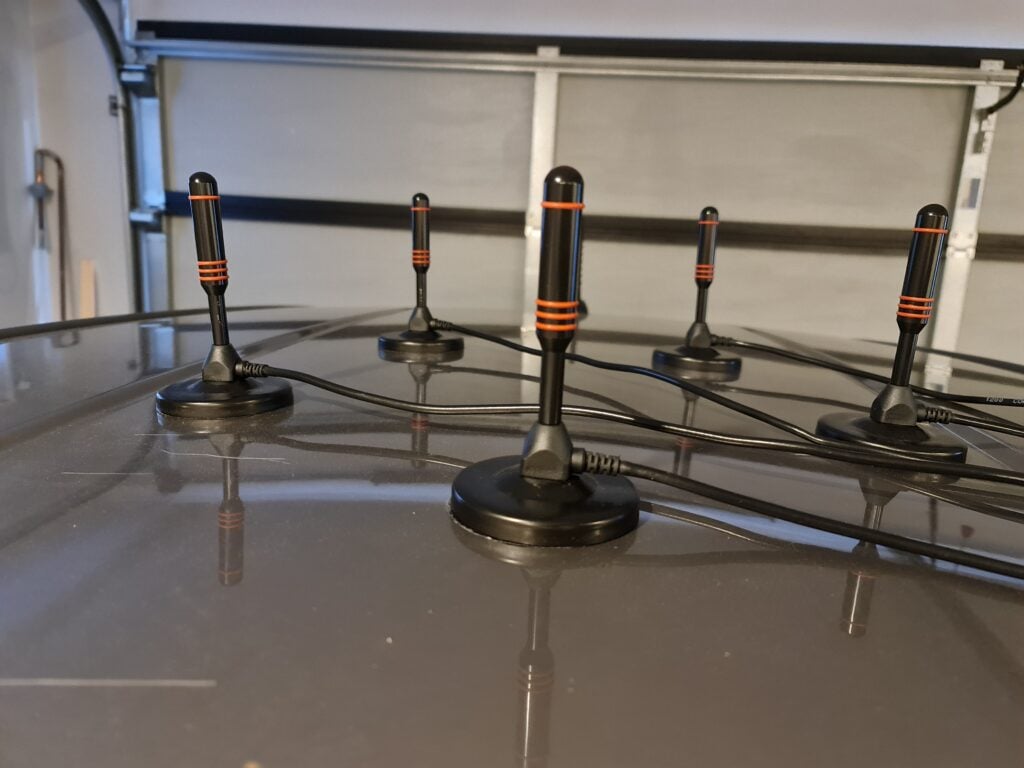
We have also been working with Arrow Antennas in the USA, who are producing a KrakenSDR 5-element dipole array antenna which is great for use in fixed sites (for example on the roof of a house). The antenna will be sold by Arrow antennas (not by us), and the future link (not active yet) will be http://www.arrowantennas.com/arrowii/kraken.html. We expect them to generate this page within the next few days. This antenna has been used in all our fixed site experiments as you can see in some of the YouTube videos, and works very well. (The image below show a prototype, we're told the final version may look slightly different.)
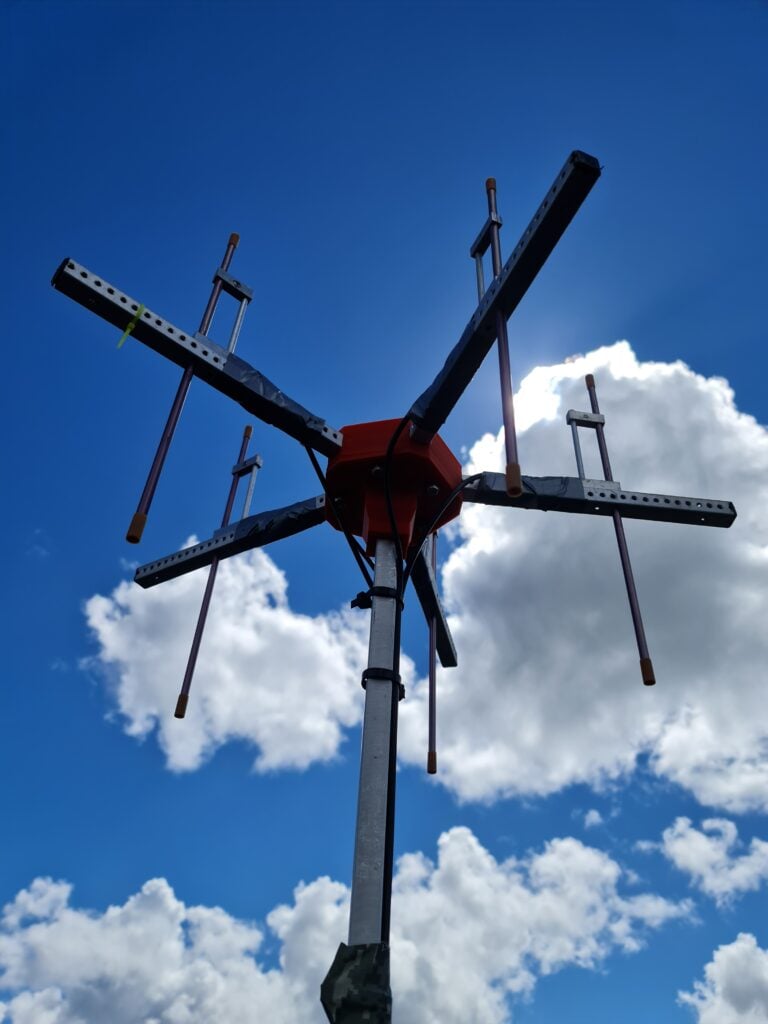
Future Work
DAQ & Direction of Arrival (DOA / Radio Direction Finding) :
Work on the DAQ and DSP software is coming along well and this is mostly complete and runs stable on a Raspberry Pi 4. There are just now bug fixes and minor features being added. Intermittent 'bursty' signal handing is already working, but we are working on improving it's sensitivity to weak bursty narrowband CW signals which can still be problematic to detect. The Android app is also currently being field tested.
Passive Radar:
Work on new passive radar software is also ongoing and we expect to have something ready for experimentation and with quickstart guides before shipping. At the moment it is also still possible to use the older KerberosSDR software for passive radar, but we believe the new DAQ core software will run things much smoother. The goal for the new software is to not only plot a range-doppler map, but to combine it with direction finding and be able to plot radar detections on a map. This feature may require operation on a device faster than the Raspberry Pi 4, such as GPU based device like a NVIDIA Jetson.
Beam Forming, Interferometry:
One application we think the KrakenSDR would be great with is amateur radio astronomy via interferometry. The ability to combine multiple small hydrogen line dishes spread out over several meters of area should result in much greater radio imaging resolution, without needing to deal with a single huge dish. It may also allow for electrically steering a beam without needing to rotate the dishes.
Advanced Direction Finding + Advanced Log Management:
At the moment networked direction finding (direction finding via multiple fixed or mobile sites spread out around a city or area) is possible via the third party RDF Mapper software, but we aim to create our own advanced platform in the near future. The goal is to have software that will automatically log and alert when a signal of interest appears. For some examples we can see this being used to help coastguard locate distressed marine pleasurecraft that typically do not have AIS via their VHF radios, locate emergency beacons, for animal/wildlife/asset tracking, and monitoring for illegal/interference transmissions.
At this stage the core DAQ+DSP software will also be updated to support monitoring multiple simultaneous channels within the available 2.56 MHz bandwidth, and with a scanning and beacon ID detection feature.
Research into field applications:
One example we hope to test is the operation of KrakenSDR on a drone. With great line of sight from up in the sky, localizing a transmitter should be fast. Another example could be actually visualizing signals like light via augmented reality.
Some of our previous KerberosSDR and KrakenSDR posts might also be of interest.
- Various KrakenSDR demo videos
- KrakenSDR Passive Radar Demo
- A KerberosSDR radio direction finding RC boat
- Tracking a weather balloon via radio direction finding techniques only
- Passive radar peak hold displaying aircraft tracks
- Monitoring air traffic, ADS-B, ACARS and VDL2 simultaneously with the four tuners
- KerberosSDR vehicle HUD
- KerberosSDR tracking a drone carrying an FM beacon
- How to set up networked multi unit radio direction finding
- Measuring vehicle traffic activity in a neighbourhood with passive radar
- SignalsEverywhere demonstrating the KerberosSDR RDF Android App
- Our own demos of the KerberosSDR RDF Android App

